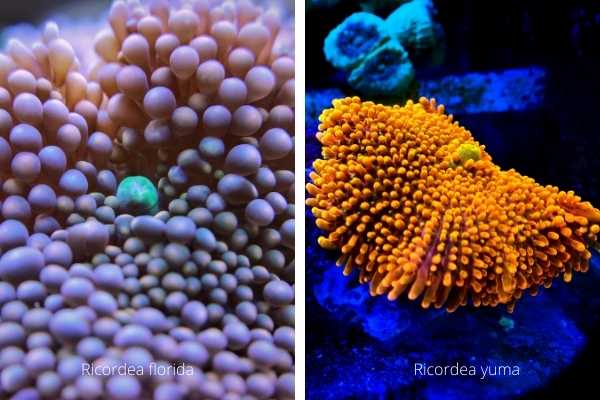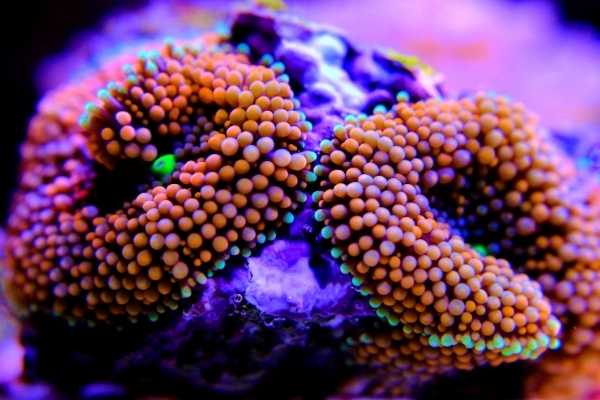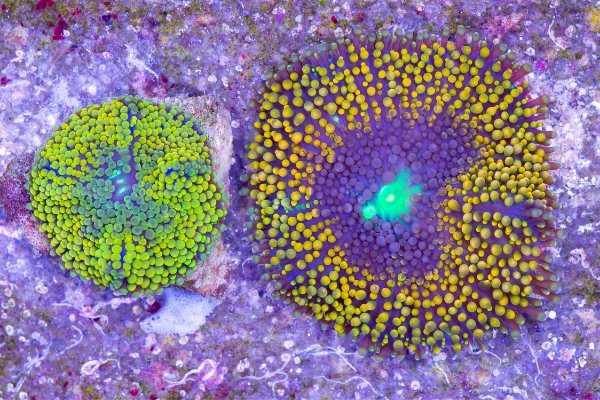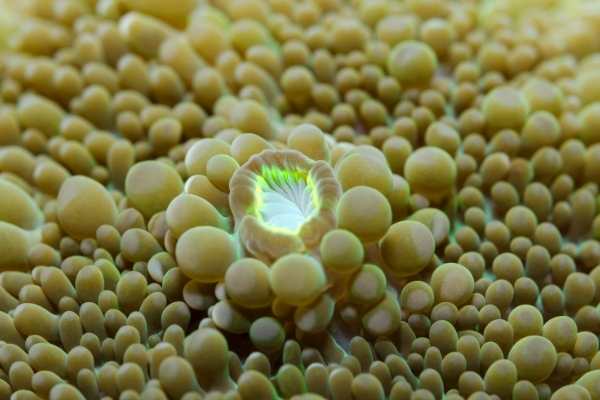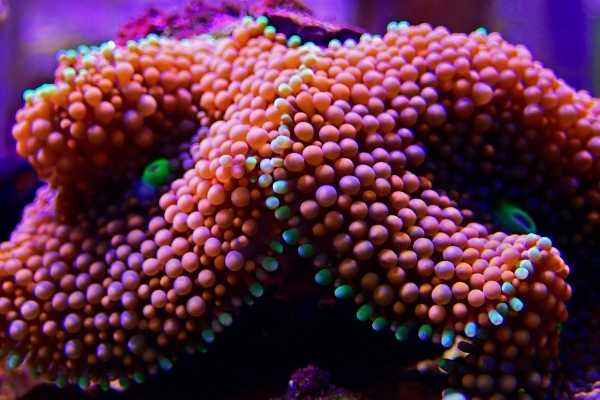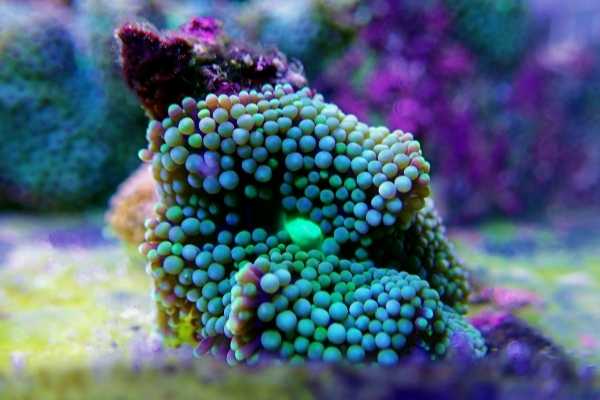[ad_1]
The Ricordea, or flower mushroom coral, is a very popular mushroom anemone (coral) among saltwater aquarium enthusiasts because they are relatively easy to keep and have some amazing coloration.
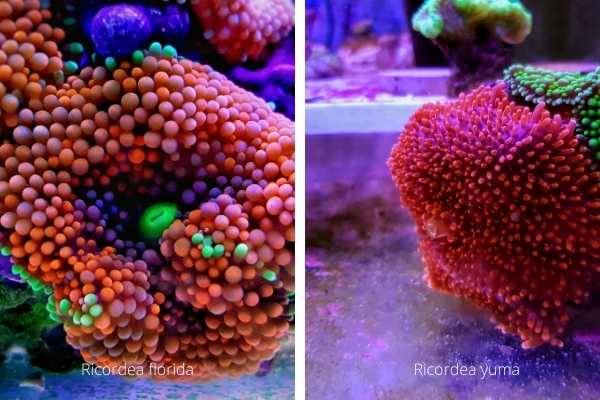
What differences do you see between the two genera?
In nature, they are primarily found on the rock structure with areas of shallow and medium depth reefs. They are also found in deeper waters as smaller colonies or as solitary animals.
Technically speaking, or perhaps more accurately, taxonomically speaking, they are not true corals, but rather are more similar to the mushroom coral anemones. But let’s face it, whether they are anemones or false corals doesn’t really matter with respect to the point of trying to help explore their care needs in an aquarium–so we will treat them like corals for the rest of this article.
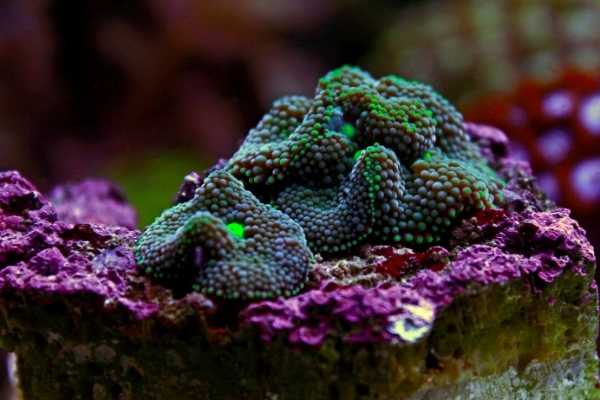
Those colors really pop on top of the coralline algae
Overview
The two most popular species in the hobby are Ricordea florida and Ricordea yuma.
R. florida inhabits the tropical Western Atlantic and Caribbean waters while R. yuma is seen in the tropical Pacific.
Ricordea mushrooms have a small, round body with a short club or berry-shaped tentacles. The basal portion of the coral has a flat disk that functions as a foot while the other end is the oral disk which functions has a mouth in the center (sometimes more than one month if the ricordea is in the process of splitting).
Both of the common species, Ricordea florida and Ricordea yuma, have their own distinct colors and patterns that range from orange and green to neon-green and shining blue.
Quick care facts
- Common name: Ricordea, Ricordea mushroom
- Scientific names: Ricordea florida and Ricordea yuma
- Care level: Beginner and Advanced
- Aggression level: Semi-aggressive – don’t let it touch or crowd neighboring corals
- Light requirements: Medium to high
- Flow requirements: Low to medium
- Special notes: R. yuma is much more challenging than R. florida
- Water quality: Standard reef tank water parameters are needed. Learn more here.
Feeding
Ricordea corals are considered to be photosynthetic, because of the symbiotic zooxanthellae that live within their body tissues. It is technically the single-cell zooxanthellae that are responsible for photosynthetic operations, but the gladly share their sugar (glucose), in exchange for a relatively safe home in the reef…or more specifically…in your home. This is thought to provide this mushroom coral anemone with the majority of its nutrition.
Not a bad deal, eh? Seems like an arrangement Homer Simpson would be proud of.
Despite the fact that they will derive some of their nutrition from photosynthesis via the symbiotic ( or is it commensal?) relationship with the zooxanthellae, it is important to note that the ricordea is an animal, and animals like to eat. These coral anemones are capable of capturing Artemia (brine shrimp), Mysis shrimp as well as other small zooplankton-like foods.
For maximum growth, it is best to feed your ricordea regularly, although you may find it to be a bit challenging to keep the food away from aggressively-eating fish.
Life in the Aquarium
Ricordea mushroom corals are very popular for both beginners and experienced aquarists due to their minimal care needs and a wide tolerance for lighting conditions (generally speaking, there are always exceptions). They are generally easy to care for and would make an excellent addition to almost any reef tank.
To maintain their health and vibrant coloration, the ricordea needs moderately bright lighting. I had some challenges keeping them happy in my tank when I had metal halides—you may need to experiment to find the proper depth based on your own aquarium lights.
They require low-to-moderate flow and room to grow/multiply without the risk of bumping into neighboring corals. Don’t put them directly into a high flow area.
See what aquarium water parameters are most important, here.
Propagation
Ricordea corals, like other mushrooms, are fairly easy to frag or propagate. Fragging can be accomplished simply by cutting the animal cleanly with a razor blade and allowing the frag to settle and attach onto some live rock rubble.
To learn more about fragging corals, I have two recommendations:
Check out this article first–and then consider ordering a copy of the book: How to Frag Corals.
Conclusion
Ricordea are attractive and hardy mushroom corals that will add color, variety, and beauty to almost any saltwater aquarium. They are generally widely available for a reasonable price (about $25/polyp, many times) and tend to do well in captivity if provided the right environment in which to thrive.
Learn more
Looking for more information about other great corals? Check out these articles here:
Watch this video to go deeper into caring for the ricordea:
[ad_2]
Source link

